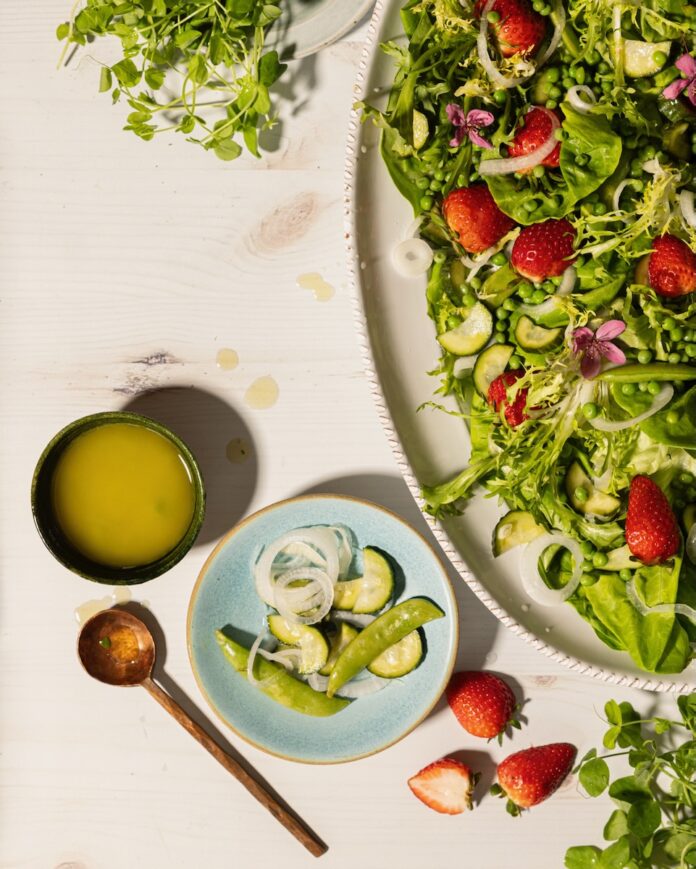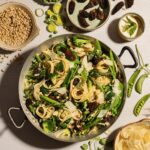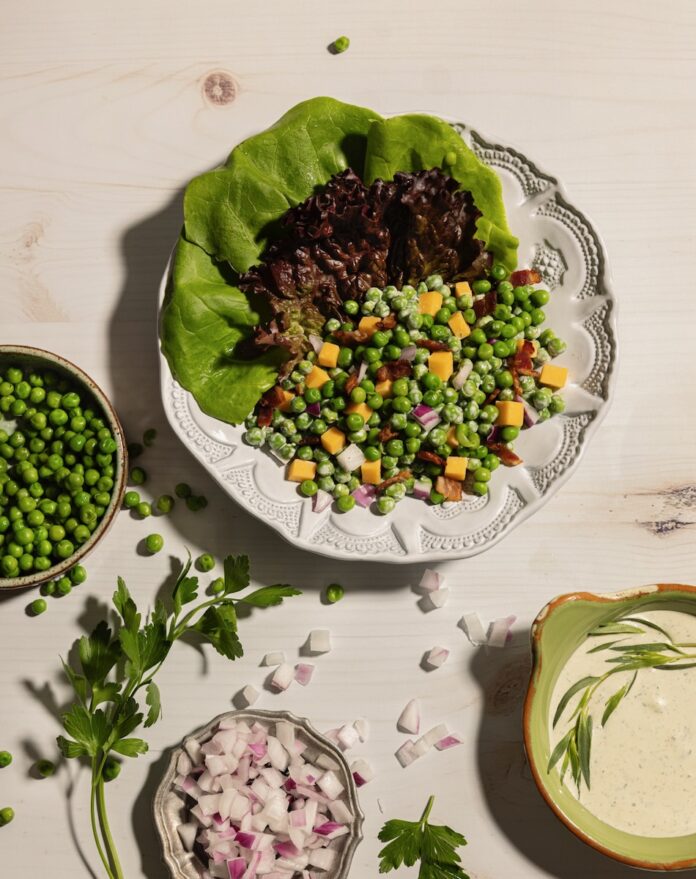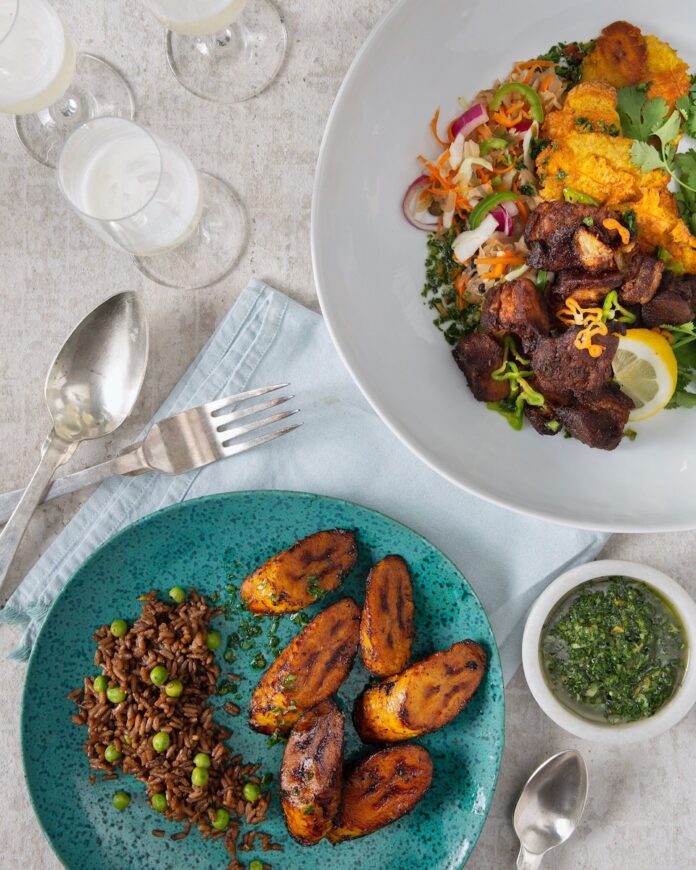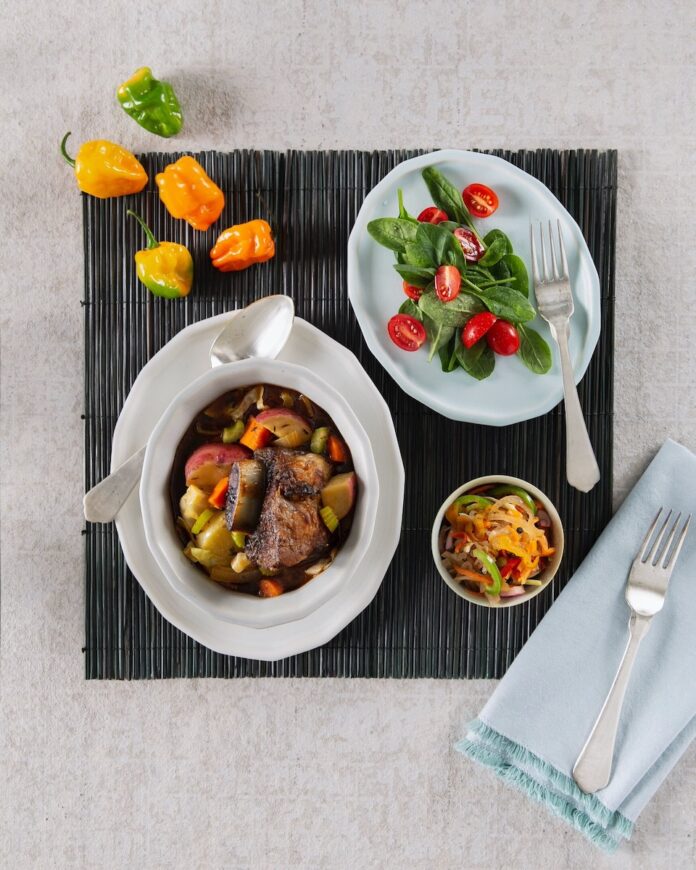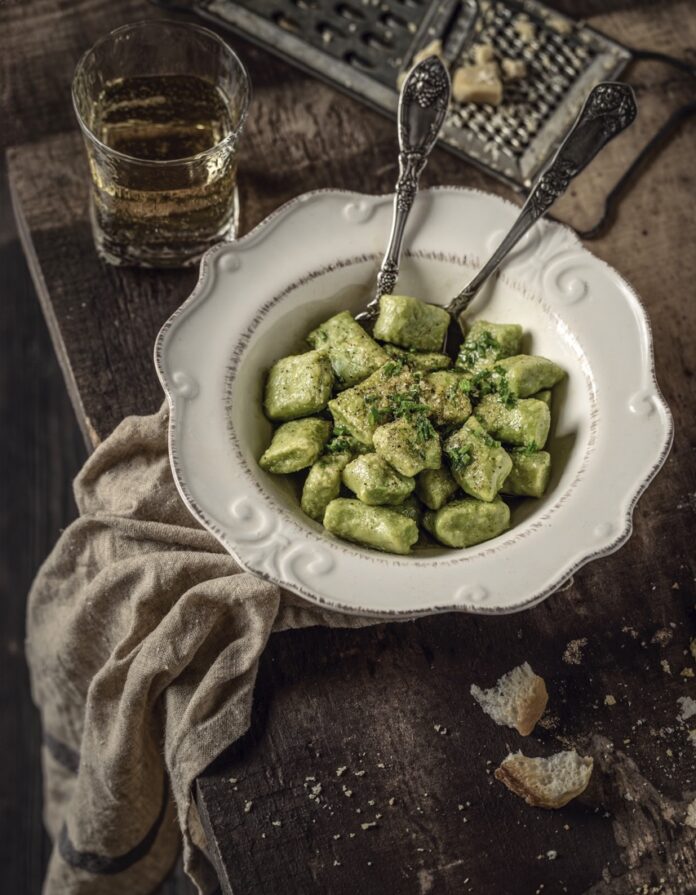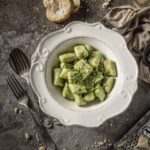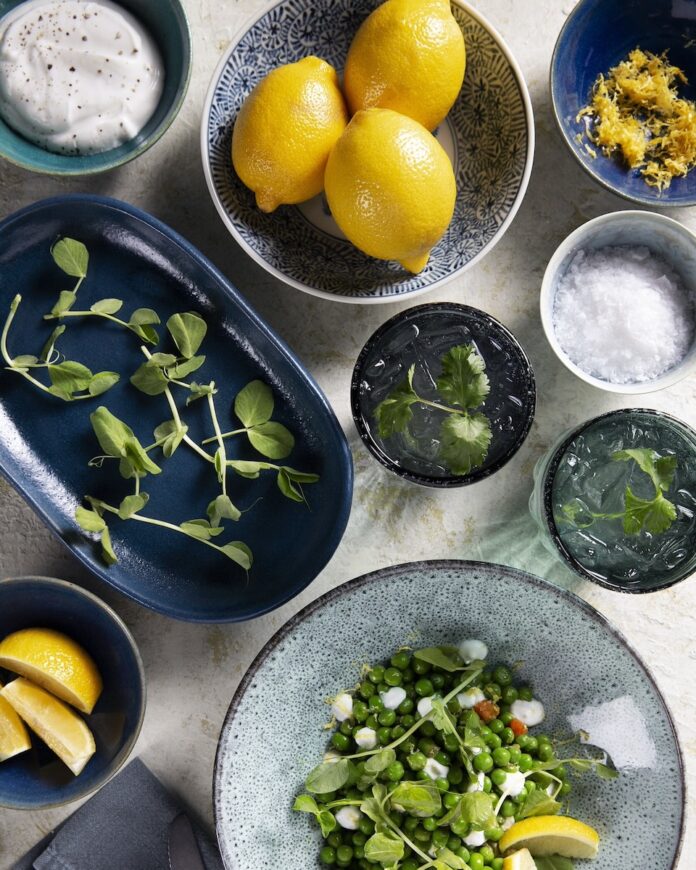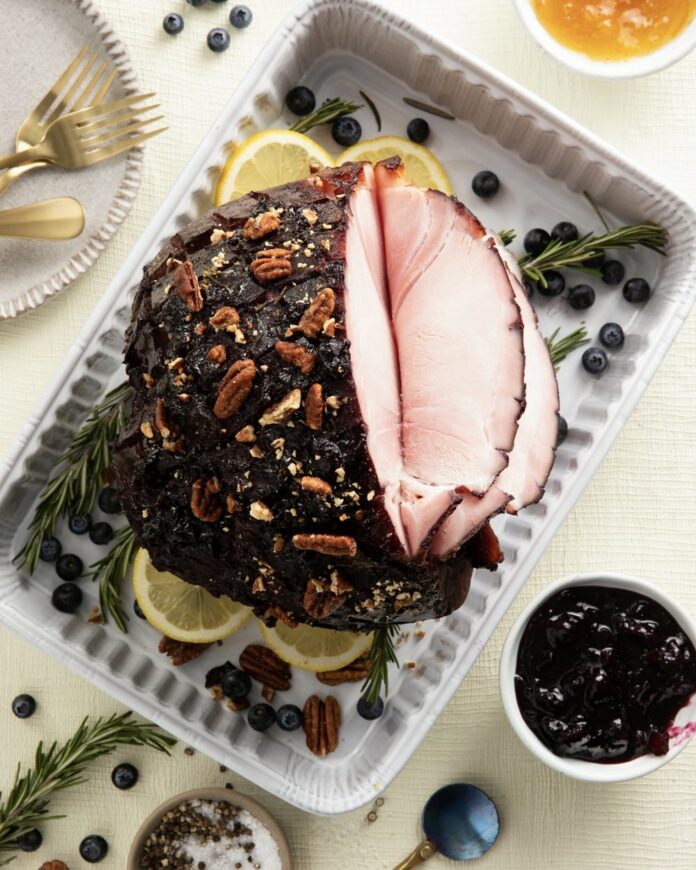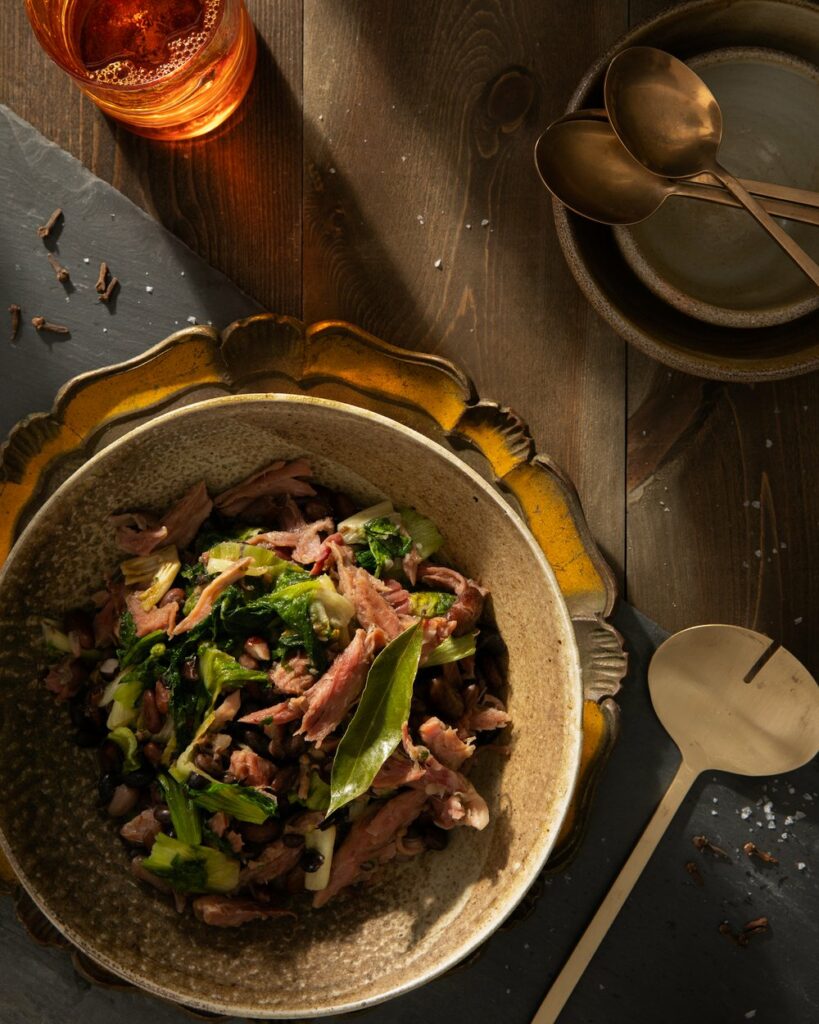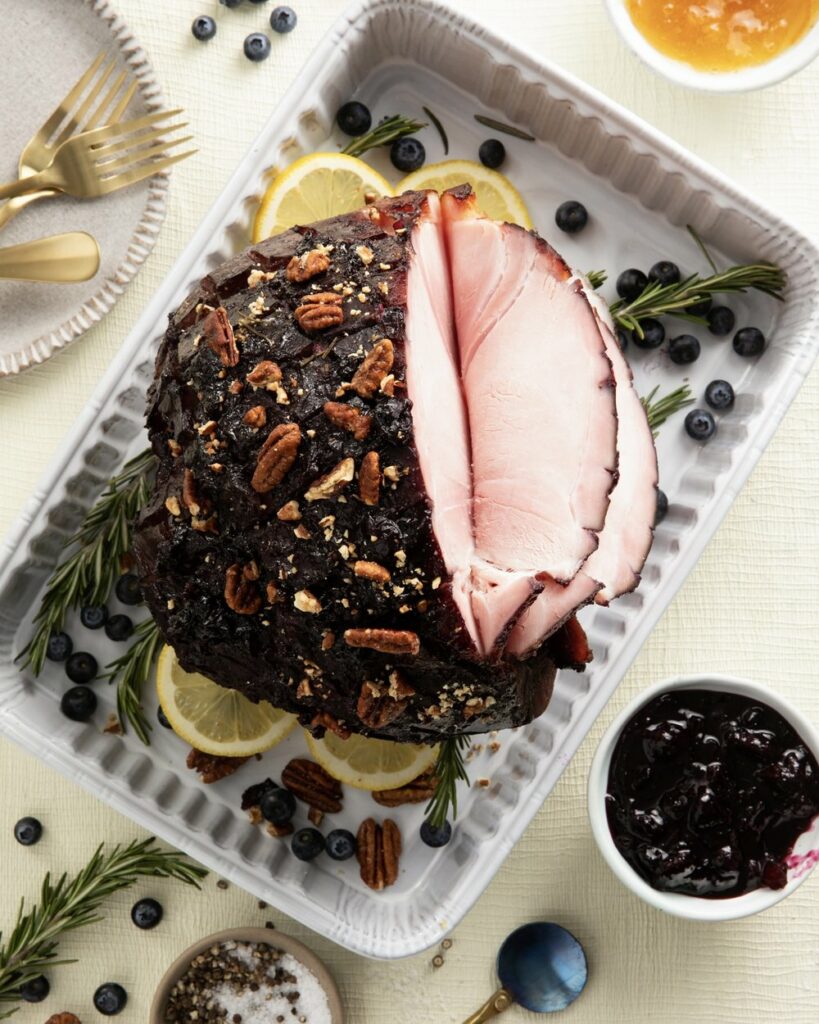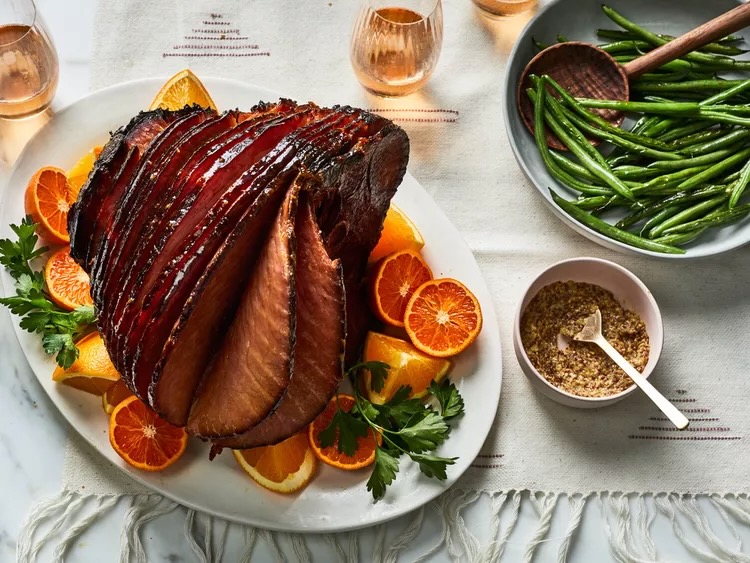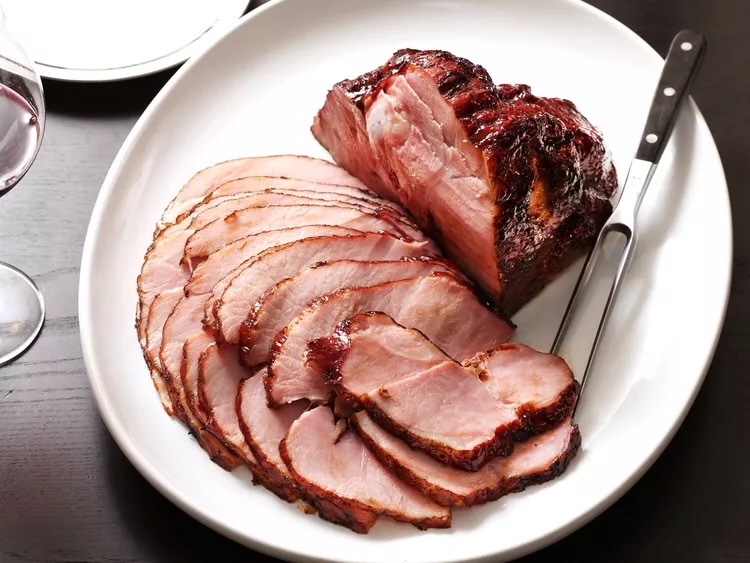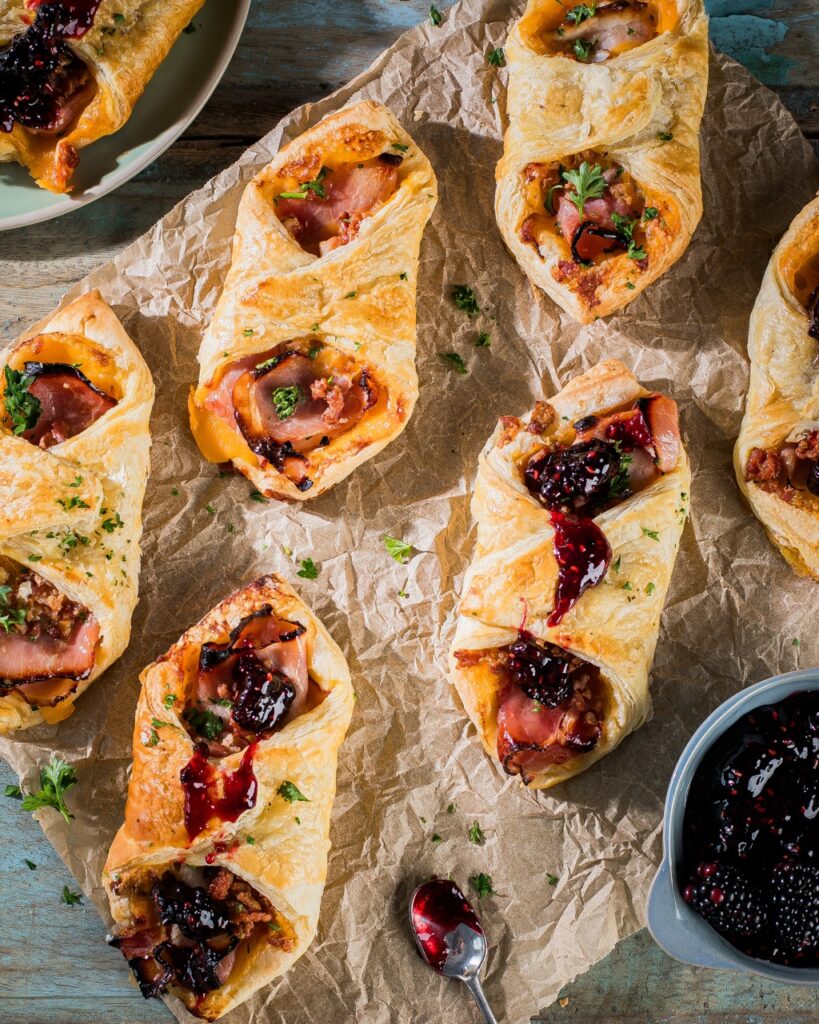This Pea Salad with Greens, Strawberries, and Mint Vinaigrette is a toss-up of bright tastes and textures. Some of the vegetables — the peas in pods, in particular — get a light pickling, which adds more interest to the final sweet and savory dish. Should some diced carrot, zucchini, or bell pepper make their way into the pickling … you may find some bespoke nuances you’ll want to keep in your pocket for future occasions.
How Long Should You Pickle the Vegetables in This Pea Salad?
For our Pea Salad recipe, you’re only going to want to give your vegetables a quick pickle. Both sugar snap peas and cucumbers are two vegetables that since they’re so delicate, could soften too much and lose their crunch. Therefore, a quick pickle is going to be better for your productivity and your ingredients. You should only leave your veggies in the pickling liquid at room temperature for a few minutes before moving the concoction into the refrigerator. Thankfully, since we’re only doing a quick pickle, you only need to leave the jar of pickled vegetables in the refrigerator for about an hour. This gives your ingredients enough time to get that briney flavor without compromising the texture.
Print
Pea Salad with Greens, Strawberries, and Mint Vinaigrette
- Yield: Serves 6
Description
Pickled vegetables in a salad? We promise it’s more delicious than you think!
Ingredients
For the pickled vegetables:
- About 6 oz sugar snap peas in the pod
- About 6 oz purple-hulled sugar snap peas, snow peas, or additional sugar snap peas in the pod
- ½ medium cucumber, halved lengthwise, seeded, and cut in thin half moons
- ½ small sweet onion, sliced very thin
- 1 cup white vinegar
- 1 tsp salt
- ½ cup water
- ½ cup sugar
For the dressing:
- ¼ cup vegetable oil
- ¼ cup extra-virgin olive oil
- 3 tbsp white wine or champagne vinegar
- 2 tbsp chopped fresh mint
- 1 tsp granulated sugar
- 1 tsp Dijon mustard
- ½ tsp salt
For the salad:
- 1 cup shelled fresh peas
- 2 to 3 large handfuls mâche or torn butter lettuce
- 1 pint fresh strawberries, hulled and halved
- Pea tendrils, optional
Instructions
For the pickled vegetables:
- About an hour before you plan to serve the salad, combine all of the peas in the pod, onion, and cucumber in a heatproof bowl.
- In a small saucepan, bring the vinegar, water, sugar, and salt to a boil. Pour the hot liquid over the vegetables. Let stand a few minutes at room temperature, then refrigerate the mixture.
For the dressing:
- Combine the oils, vinegar, mint, sugar, mustard, and salt in a small covered jar.
For the salad:
- To assemble the salad, toss the shelled peas with about one-quarter of the dressing. Toss the mâche with another one-quarter of the dressing. Arrange both on a large platter or on individual salad plates.
- Drain the pickled vegetables and scatter them over the greens and peas. Tuck strawberries around the other ingredients. Add pea tendrils too, if using. Drizzle the salad with more dressing and serve.
Story and Recipe by Cheryl Alters Jamison
Styling by Julia Platt Leonard
Photography by Tira Howard
Subscribe to TABLE Magazine’s print edition.
